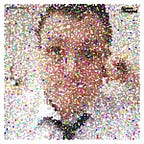Side By Side (2012)
[caption id=”attachment_1127" align=”alignright” width=”300"]
Film. The subject of this documentary. This image is about as subtle as a brick to the face.[/caption]
Twitter Plot Summary: Neo from The Matrix talks to a bunch of directors to debate the pros and cons of film and digital.
Genre: Documentary
Director: Christopher Kenneally
Key Cast: Keanu Reeves, Martin Scorsese, George Lucas, James Cameron, Robert Rodriguez, Lars Von Trier, David Fincher, David Lynch, Steven Soderbergh
Five Point Summary:
1. Film VS Digital. There’s only one way to find the winner…
2. Star Wars Episode 2 was the first film to be shot in HD. Glory be.
3. I can see the benefits of both formats, there’s no hard and fast rule.
4. Finally, people in the know have admitted that 3D is a fad.
5. Digital archiving is a problem that needs to be solved.
Is celluloid film on its deathbed? That’s the question raised by this documentary presented by Keanu Reeves. Yeah, that’s what I thought too. Keanu seems a decent chap, but he seems an odd choice to present a documentary about the pros and cons between making movies on film or via digital methods. With the input from a large number of prominent directors and cinematographers, opinions in favour of one or both formats are presented. The likes of James Cameron, Robert Rodriguez, Martin Scorsese and Steven Soderbergh, amongst others, are the key interviewees, and opinions vary wildly between even this select group of filmmakers.
Film has a couple of things going for it, a richer colour and feeling of depth, but requires time to set up the shot, to set up the film stock, the colours and so on. Much of this is dictated by the cinematographer, the person responsible on a film for making it look the way it does — lighting, framing, colour palettes and so on. I’ve said before and I’ll say it many times again, but never underestimate the benefits of having a top notch cinematographer on a film, you can tell the difference between the ones that do and the ones that don’t. Film has a certain look, a certain visual texture that has until recently differentiated it from the likes of television and other visual media. More recently technological advances and the switch to digital has blurred the lines between the two.
[caption id=”attachment_1128" align=”alignleft” width=”300"]
“HADOUKEN!”[/caption]
Digital meanwhile gives you the potential for quick turnarounds and allows you to work much faster and on a tighter budget. There’s also a lot of scope for tinkering with footage in post-production to achieve a “film” look, to tinker with colour palettes and so on. Essentially, everything a cinematographer does can be amended in post-production. There’s also the added bonus, for some filmmakers, that they can get instant playback of the footage they have just shot and make amendments on the fly, rather than wait to receive dailies (all the footage shot on that day in a rough cut format) and then make amendments at a later date.
The documentary also discusses the problems with archiving — film stock is itself a degradable format, although that’s often more to do with how it’s stored than anything else. As far as digital is concerned, hard drive storage for digital is also problematic because there is nothing in place to securely archive digitally stored films and data.
So what’s the verdict? Unsurprisingly there’s no definitive answer given, both formats have their positive and negative points, and the documentary raises a lot of questions that are quite pertinent for the film industry to consider. Perhaps the most important aspect to note is that film cameras have ceased production, so whilst it’s unlikely to occur for some time, movies made using actual film stock are likely to become a thing of the past. Ultimately, all storage for films and so on has a finite lifespan whichever format you use, so I would think that a focus on creating a secure storage medium would be the best thing for the industry to concern themselves with. Suffice to say, the documentary is entertaining and makes quite a few valid points, but the fact it sits resolutely on the fence between the two methods doesn’t help. Still, as a history of the film making process and a discussion on the possibilities for the future, it’s engrossing stuff.
Quote: “There are no archival formats worth anything in the digital realm that you would put any stock in.”
Score: 3.5/5
